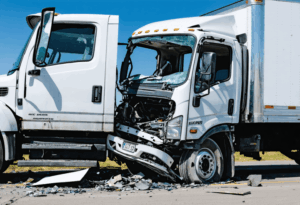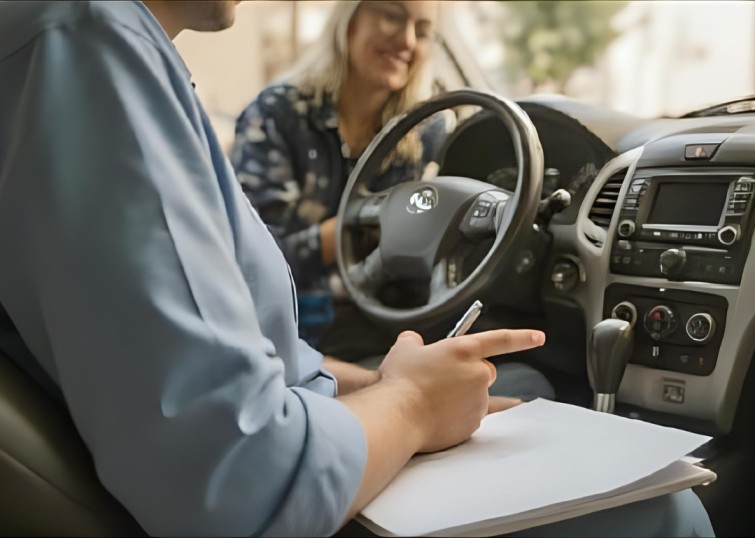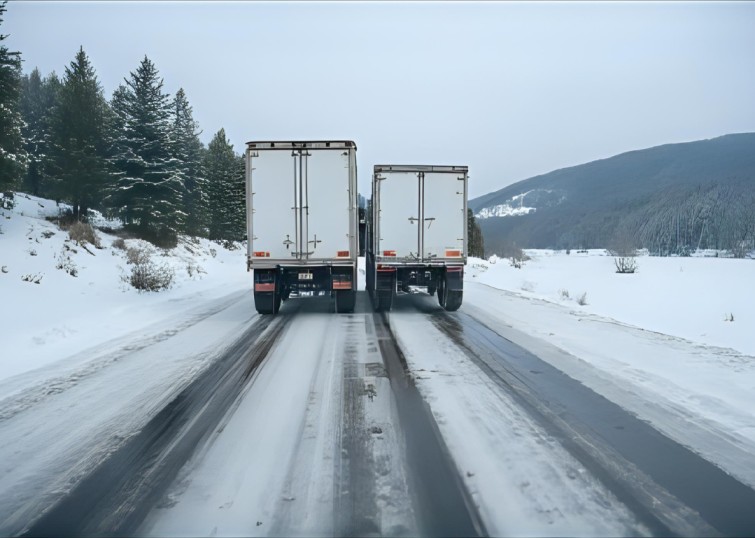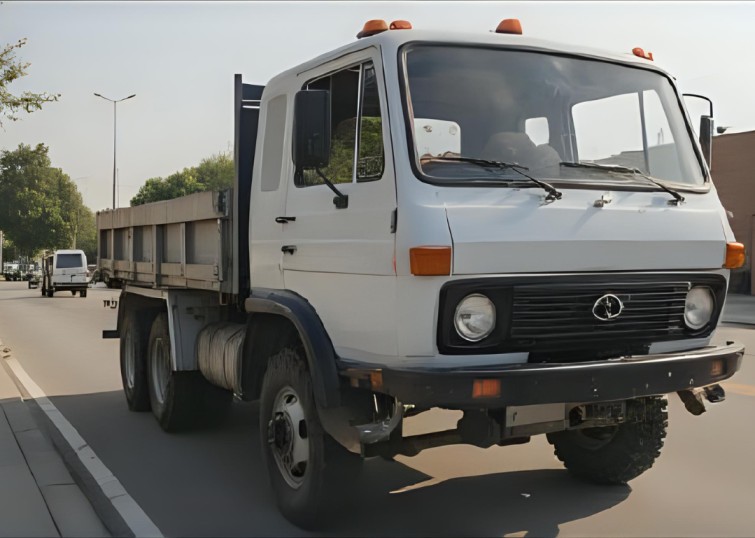TL;DR
In the event of a truck accident leading to a pile-up, prioritize safety by moving to a safe location if possible, call emergency services immediately, document the scene thoroughly, seek medical attention, and consult with legal and insurance professionals to protect your rights and interests.
Key Highlights:
- Ensure Safety: Move to a safe area away from traffic if you can do so without risking further injury.
- Contact Authorities: Immediately call 911 to report the accident and request medical assistance.
- Document the Scene: Take photos, gather witness information, and note vehicle positions to support your case.
- Seek Medical Care: Even minor injuries can have long-term effects; get evaluated by a healthcare professional.
- Notify Your Insurance: Inform your insurance company about the accident as soon as possible.
- Consult Legal Experts: Speak with an attorney to understand your rights and navigate any legal complexities.

Trucking incidents on busy highways can lead to severe consequences, often escalating into multi-vehicle collisions known as pile-ups. These accidents not only result in significant property damage but also pose substantial risks to the health and safety of all involved parties. For instance, statistics show that in the United States, there are thousands of truck-related accidents each year, with a notable percentage leading to multiple vehicle impacts.
Understanding the dynamics of pile-ups involving large commercial trucks is crucial, especially considering the size and weight differences between trucks and passenger vehicles. These disparities can lead to more severe outcomes in the event of a collision. Furthermore, specific state regulations, such as Georgia’s Motor Vehicle Code, establish guidelines for trucking operations, driver responsibilities, and accident reporting requirements, which play a vital role in managing and mitigating the aftermath of such incidents.
Responding effectively when a truck accident causes a pile-up requires immediate action and informed decision-making. From securing the scene to protecting your legal rights, each step taken can significantly influence the outcome of the situation. The following sections provide a comprehensive guide on handling these complex and often traumatic events, ensuring that you are prepared to act promptly and responsibly.
Step: Ensure Immediate Safety
Assess the Situation
The first priority after a truck accident resulting in a pile-up is to ensure your safety and that of others around you. Quickly assess your surroundings to determine if there is an immediate threat, such as fire, leaking fuel, or unstable vehicles that could lead to further accidents.
Move to Safety
If you are able to safely exit your vehicle and there is no life-threatening danger, move to the side of the road or another safe location away from active traffic. This helps prevent additional collisions and reduces the risk of further injuries.
Turn on Hazard Lights
Activate your vehicle’s hazard lights to alert other drivers of the accident. This increases visibility and serves as a warning to slow down or stop, helping to prevent more vehicles from crashing into the pile-up.
Use Reflective Triangles or Flares
If available, place reflective triangles or flares at a safe distance from the accident scene. This provides additional visibility, especially during low-light conditions, guiding oncoming traffic to slow down and navigate around the incident.
Step 2: Contact Emergency Services
Call 911 Immediately
No matter the severity of the accident, it is essential to contact emergency services immediately. Provide clear and concise information about the location, number of vehicles involved, and any apparent injuries.
Provide Detailed Information
When speaking with the emergency operator, include specifics such as the exact address or highway markers, the types of vehicles involved, the direction of travel, and any immediate hazards present. This information assists responders in reaching the scene promptly and preparing adequately for the situation.
Follow Instructions
Listen carefully to any instructions given by the emergency operator. They may provide guidance on how to assist injured individuals or secure the area until help arrives.
Await Assistance Safely
Remain in a safe location until emergency personnel arrive. Avoid obstructing the flow of traffic but stay close enough to provide assistance if necessary.
Step 3: Document the Scene
Gather Evidence
Collect evidence as much as possible at the scene. Use your smartphone or a camera to take photographs of all vehicles involved, showing the positions and any visible damage. Capture wide-angle shots of the entire accident scene, close-ups of specific damage, and any skid marks or debris.
Exchange Information
Obtain contact and insurance information from all drivers involved in the accident. This should include names, phone numbers, addresses, insurance companies, and policy numbers. Additionally, note the make, model, and license plate numbers of all vehicles involved.
Speak with Witnesses
If there are any witnesses to the accident, politely ask for their contact information and a brief statement of what they observed. Their accounts can be invaluable in reconstructing the events leading up to the pile-up.
Note Environmental Conditions
Record details about the environmental conditions at the time of the accident, such as weather, visibility, road conditions, and lighting. These factors can influence the cause and severity of the collision.
Step 4: Seek Medical Attention
Get a Health Evaluation
Even if you feel fine, it’s crucial to get a medical evaluation after a pile-up. Some injuries, like whiplash or internal trauma, may not present symptoms immediately but can have serious consequences if left untreated.
Follow Medical Advice
Adhere to the treatment plan prescribed by your healthcare provider. This may include medication, physical therapy, or follow-up appointments to monitor your recovery.
Keep Medical Records
Maintain detailed records of all medical treatments related to the accident. These documents are important for insurance claims and any potential legal actions you may undertake.
Monitor Your Health
Be vigilant for any delayed symptoms or changes in your health status following the accident. Promptly report any new or worsening symptoms to your healthcare provider.
Step 5: Notify Your Insurance Company
Report the Accident Promptly
Contact your insurance company as soon as possible to report the accident. Delaying this notification can complicate the claims process and potentially affect your coverage.
Provide Accurate Information
When speaking with your insurance representative, provide honest and thorough details about the accident. Include all relevant information, such as the circumstances leading up to the pile-up, the damages sustained, and any injuries.
Understand Your Coverage
Review your insurance policy to understand the coverage you have in scenarios like truck accidents and pile-ups. Knowing what is covered and the extent of your policy helps in managing expectations and planning your next steps.
Keep Records Organized
Maintain organized records of all communications with your insurance company, including dates, times, and the names of the representatives you speak with. This helps ensure transparency and accountability throughout the claims process.
Step 6: Consult Legal Experts
Seek Legal Counsel
Engaging with a truck accident attorney who specializes in truck accidents and multi-vehicle collisions is essential. They can provide guidance on your rights, help navigate the complexities of personal injury law, and advocate on your behalf.
Gather All Documentation
Provide your attorney with all relevant documentation, including police reports, medical records, photographs, witness statements, and insurance information. Comprehensive documentation strengthens your case and supports your claims for compensation.
Understand Liability
Determining liability in a pile-up can be complex due to the involvement of multiple parties. Your attorney will help identify who is at fault, whether it’s due to driver error, mechanical failure, or other factors, ensuring that blame is appropriately assigned.
Discuss Compensation
A legal expert can assist in calculating the compensation you deserve, covering medical expenses, property damage, lost wages, and other relevant costs. They can also negotiate with insurance companies to secure a fair settlement.
Step 7: Prevent Future Incidents
Advocate for Safety
Encourage and support initiatives aimed at improving truck safety, such as better road infrastructure, stricter regulations, and enhanced driver training programs. Being proactive in these areas can help reduce the likelihood of future pile-ups.
Stay Informed
Keep abreast of local and national traffic laws, especially those pertaining to truck operations and road safety. Knowledge of these regulations can inform your actions and decisions on the road.
Promote Vehicle Maintenance
Support regular maintenance and inspections for trucks to ensure they are in optimal condition. Properly maintained vehicles are less likely to contribute to accidents caused by mechanical failures.
Educate Others
Share information about the risks and safety measures related to truck driving and multi-vehicle accidents with friends, family, and your community. Raising awareness can lead to more cautious driving behaviors and a safer driving environment for everyone.
Importance of Immediate and Informed Action
In the wake of a truck accident that results in a pile-up, every moment counts. Acting swiftly to secure safety, summon help, and document the incident lays the foundation for effective recovery and resolution. The complexity of such accidents, often involving significant property damage and multiple injuries, requires a methodical approach to ensure that all parties receive the necessary assistance and that accountability is appropriately assigned.
Moreover, understanding the legal and insurance landscapes is crucial in navigating the aftermath. Legal professionals play a pivotal role in safeguarding your interests, particularly when dealing with large commercial trucking companies that have substantial resources. Their expertise ensures that you are compensated fairly for your losses and that your rights are protected throughout the process.
Finally, reflecting on preventive measures can contribute to broader road safety improvements. By advocating for better safety standards and practices, individuals can help mitigate the risk of future pile-ups, fostering a safer driving environment for all road users.
Conclusion
Experiencing a truck pile-up can be overwhelming, but taking the right steps—like ensuring safety, contacting emergency services, and documenting the scene—can significantly impact the outcome. Seeking medical care and engaging with your insurance company are also essential to protecting your health and financial recovery.
Given the complexity of multi-vehicle accidents involving large trucks, consulting an experienced attorney can help you navigate legal challenges and secure fair compensation. If you’ve been involved in such an accident, act quickly to protect your rights and get the support you need. Contact us for a free evaluation today.



